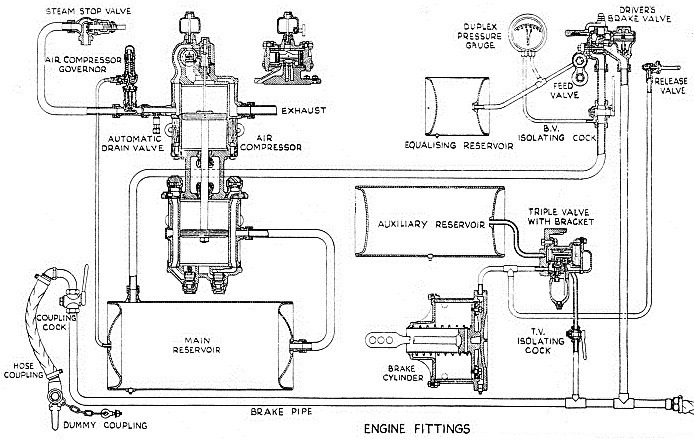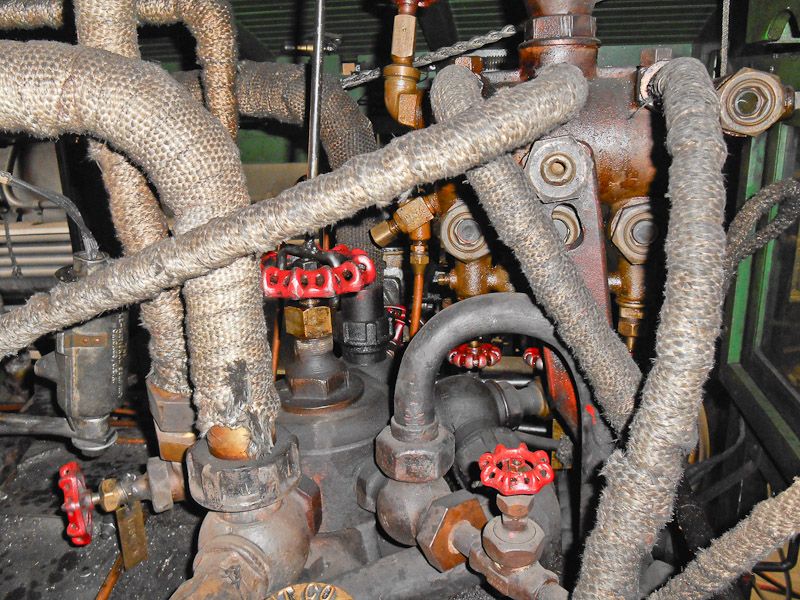I am working on designing the plumbing for my newest locomotive. Since doing the 2-6-0 I got a pretty decent idea of what the basic plumbing in a locomotive is; but I am changing things up a bit and adding a few things. Basically I need to start design the back head and the turret. So here are the items on the loco that will need to be plumbed. If people want to chime in with other items I need to have or plumbing routing it would be great.
Injectors: First, I know that most locomotives have one on each side for filling the boiler. To plumb it you need to have a cold water line from the tank tot he injector and then from the injector to the boiler with a check valve. You also need a steam line off the turret to the injector and then a overflow/drain line. That’s it for a boiler feed right?
Blower: Fireman’s side just a valve off the turret or boiler itself that runs forward to the smoke box.
Brakes: I need help here. Before I did an Eames vacuum system, I have now switched to the Westinghouse system. From what I understand of it is there needs to be a steam line off the turret to the turbine side of the brake compressor (is that the top or bottom of the unit) and then an exhaust into the smoke box? And then a cold air inlet line with filter and an outlet that runs to the tank. From the tank it goes to the brake lever and then to the brake cylinders and to the glad hands. I do know there are good diagrams on google that I will check out.
Dynamo: This one is easy. Steam line from turret to the turbine side and then an exhaust stack.
Gypsy winch: Steam line from turret to a tee and then to each steam chests and from each steam chest an exhaust each into the smoke box.
Lubricator: From the turret to the lubricator and then small line from there one to each steam chest. What else does the lubricator feed? I know many i have seen have four or more valves so where all are the heading?
That should be all coming off the turret. There is the water glass and the tri cocks on the back head plus gauges. Is there anything else I am missing or need to add lines to or from? Remember this is a back woods loco so it has to be simple. Just the basic parts.



